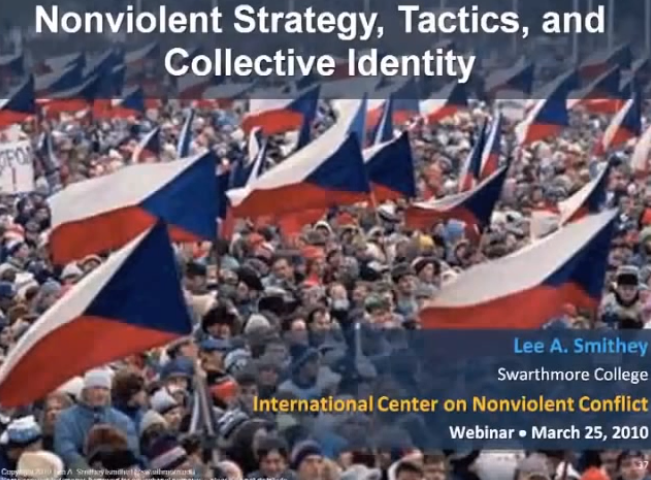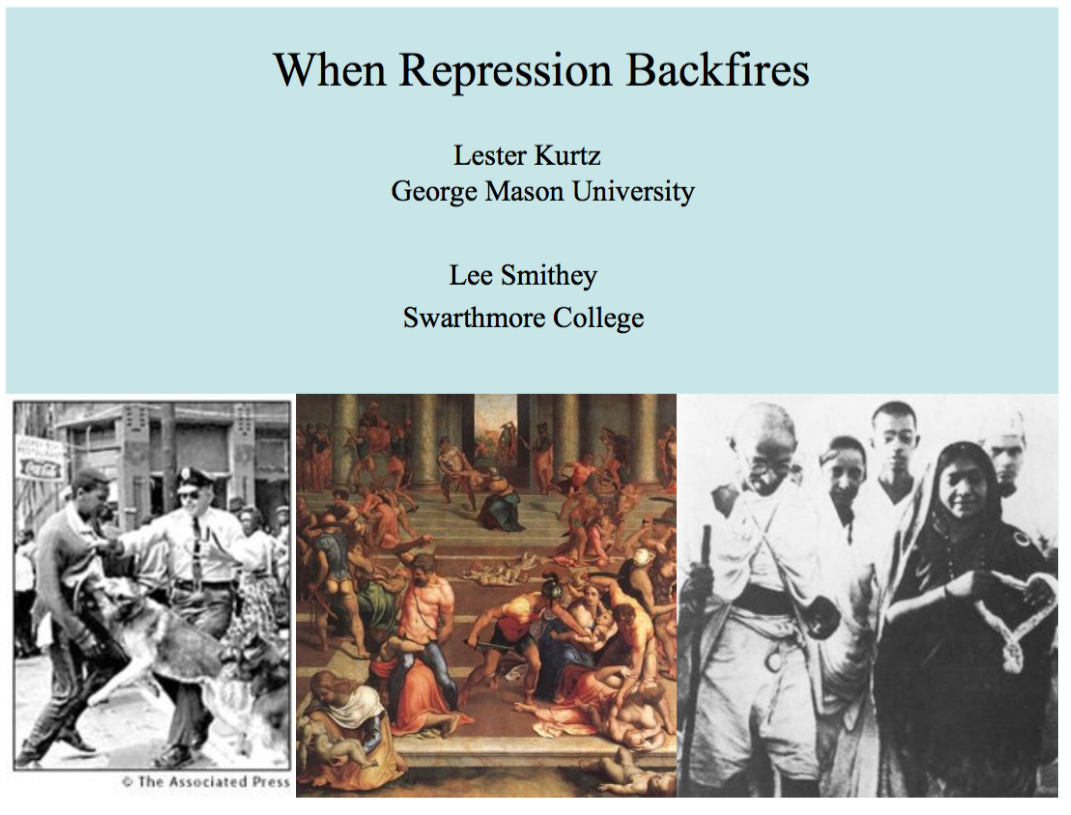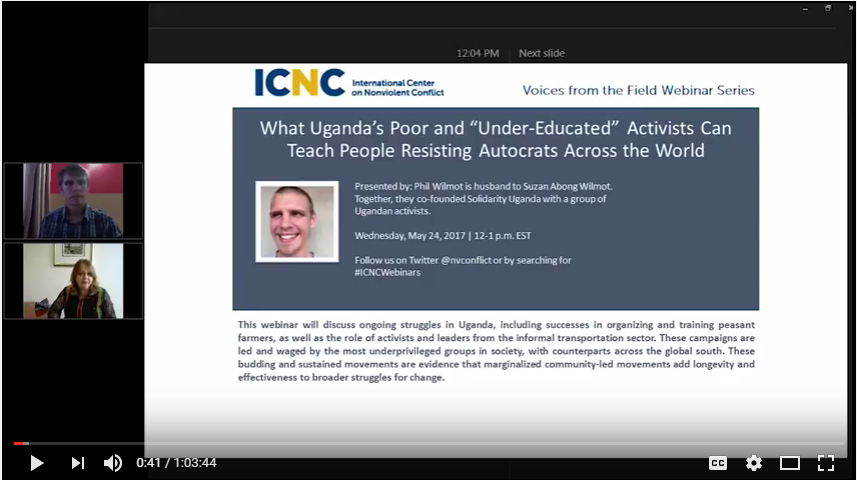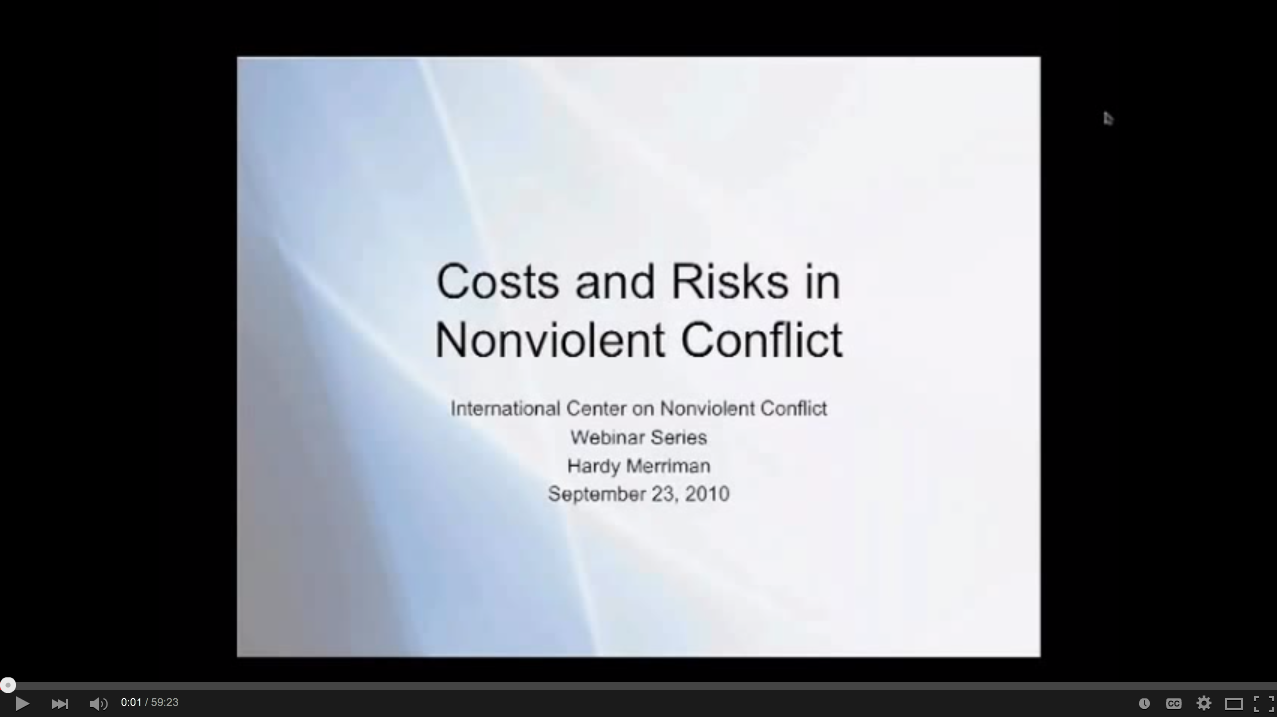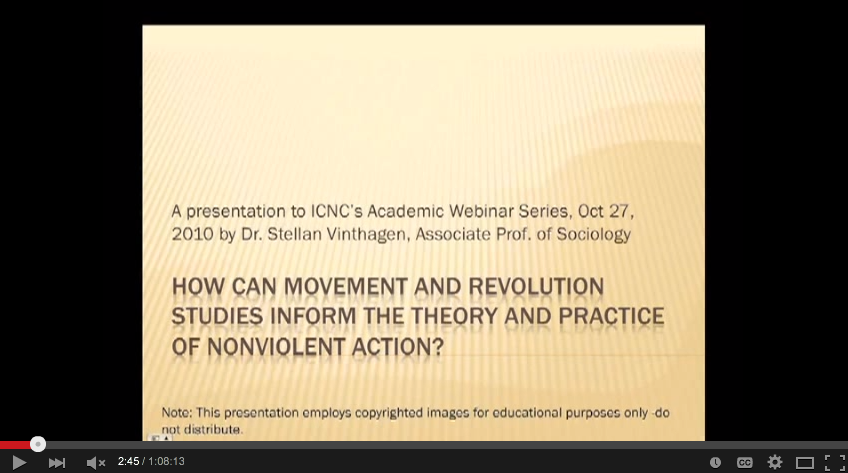
How Can Movement and Revolution Studies Inform the Theory and Practice of Nonviolent Action? (webinar)
Dr. Stellan Vinthagen, Associate Professor in Sociology and Senior Lecturer in Peace and Development Studies at Göteborg University in Sweden, looks at how real world events and statistics show how civil resistance or nonviolent action movements, contrary to conventional assumptions, are very effective means to change societies. Several authoritarian regimes have fallen (e.g. Apartheid South Africa or Milosevic’s Serbia) after popular, relatively peaceful rebellions. Recent quantitative research reports have shown a great effectiveness of civil resistance campaigns (Karatnycky & Ackerman 2005; Stephan & Chenoweth 2008). At the same time, there are several conflicts in which civil resistance has yet to be successful, e.g. in Palestine/Israel, Tibet/China, Colombia or Western Sahara/Morocco. We also see how some “nonviolent revolutions” are having serious democracy problems (e.g. Georgia or Kyrgyzstan). There are reasons to reflect on the role of various conditions and contexts when applying resistance strategies. Here nonviolent action studies have something to learn from other, more advanced, social science areas, e.g. social movement studies or revolution studies. This presentation tries to inspire and illustrate possible improvements of civil resistance strategies. What happens when we apply e.g. political opportunity theory or resource mobilization theory, or Foran’s theory of revolutions to civil resistance practice and studies? It is argued that greater effectiveness is possible if we build strategies on some established theories and understandings of movements and social change.
Download the presentation slides
ICNC Webinar, October 27, 2010
